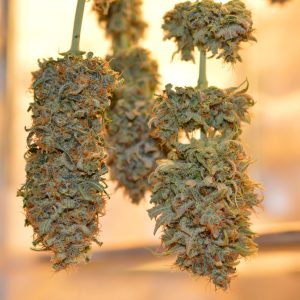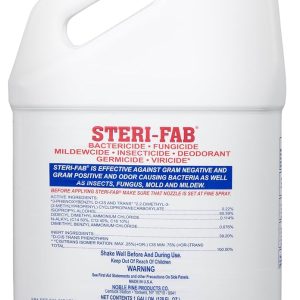
The ocean spray plant (Holodiscus discolor) stands as one of North America’s most remarkable native shrubs, offering gardeners and landscapers an exceptional combination of beauty, resilience, and ecological value. Also known as oceanspray, creambush, or ironwood, this deciduous shrub has captured the attention of both professional landscapers and home gardeners seeking sustainable, low-maintenance alternatives to traditional ornamental plants. With its cascading clusters of creamy-white flowers that resemble ocean mist and its remarkable adaptability to various growing conditions, the ocean spray plant represents the perfect marriage of aesthetic appeal and environmental responsibility.
Native to western North America, the ocean spray plant has evolved over millennia to thrive in diverse habitats ranging from coastal forests to dry mountain slopes. This evolutionary heritage translates into exceptional garden performance, making it an ideal choice for contemporary sustainable landscaping practices. The plant’s natural resilience, combined with its striking visual impact during the blooming season, positions it as a superior alternative to many non-native ornamental shrubs that require intensive care and resources.
Understanding the Ocean Spray Plant’s Natural Characteristics
Physical Attributes and Growth Patterns
The ocean spray plant is a fast-growing deciduous shrub usually measuring 1.2–1.5 metres (4–5 feet) in width, and up to 2.1 m (7 ft) tall, though under optimal conditions, it can reach even greater heights. The plant’s architecture features multiple stems that create an attractive vase-shaped form, with slender branches that often arch gracefully under the weight of their abundant flower clusters. The ocean spray plant’s distinctive branching pattern creates natural movement in the landscape, particularly when gentle breezes set the flexible stems in motion.
The alternate leaves are small, measuring 5–9 centimetres (2–3+1⁄2 inches) long and 4–7 cm (1+1⁄2–3 in) broad, lobed, and juicy green when new. These deeply lobed and toothed leaves provide excellent textural contrast in mixed plantings, while their moderate size ensures they don’t overwhelm smaller companion plants. The foliage emerges in spring with a fresh, vibrant green color that deepens throughout the growing season, providing consistent visual interest even when the plant isn’t in bloom.
The bark characteristics of mature ocean spray plants add another layer of visual appeal to winter landscapes. Older bark is dark red to brown or gray and exfoliating, creating attractive textural interest during the dormant season when deciduous plants often appear stark or lifeless. This exfoliating bark pattern becomes more pronounced as plants mature, adding significant ornamental value to established specimens.
Spectacular Flowering Display
The most celebrated feature of the ocean spray plant is undoubtedly its extraordinary flowering display. Cascading clusters of white flowers drooping from the branches give the plant its two common names, with flowers that have a faint sweet, sugary scent. These flower clusters, technically known as panicles, can measure up to 12 inches in length and contain hundreds of tiny individual flowers that create a foam-like appearance reminiscent of ocean spray hitting rocky shores.
During the flowering season (May-August), the shrub becomes a complete mass of tiny, fragrant, creamy-white flowers arranged in large, plumed clusters. This extended blooming period represents exceptional value in landscape design, as most ornamental shrubs provide color for only brief periods. The flowers begin as pure white but gradually transition through cream to pale brown as they age, extending the visual interest throughout the summer months.
The tiny flowers are massed in drooping panicles that change from white to cream to brown as they age, creating a dynamic color progression that adds depth and complexity to the plant’s appearance. This natural color evolution means that a single ocean spray plant can display multiple flower colors simultaneously, creating an almost painterly effect in the landscape.
Optimal Growing Conditions for Ocean Spray Plants
Light and Location Requirements
Understanding the proper lighting conditions is crucial for successful ocean spray plant cultivation. This plant thrives as a full sun or part shade lover, though it tolerates full shade but will grow slower. In full sun locations, ocean spray plants develop their most compact growth habit and produce the most abundant flower displays. However, their shade tolerance makes them valuable for transition areas between full sun and deeply shaded garden zones.
When selecting locations for ocean spray plants, consider their mature size and spreading habit. Oceanspray will grow to be about 10 feet tall at maturity, with a spread of 10 feet, and tends to be a little leggy, with a typical clearance of 1 foot from the ground. This growth pattern makes them suitable for planting under power lines while providing enough clearance for foot traffic beneath established specimens.
The plant’s natural habitat preferences provide valuable guidance for landscape placement. Oceanspray is found in a variety of habitats, from wet coastal forests to drier, cooler mountain peaks further inland, often growing in areas dominated by Douglas-fir. This adaptability suggests that ocean spray plants can successfully integrate into diverse landscape styles, from naturalistic woodland gardens to more structured ornamental plantings.
Soil Requirements and Drainage
One of the most appealing characteristics of the ocean spray plant is its remarkable soil adaptability. This plant is easily grown in dry to moist, fertile, well-drained soils, demonstrating flexibility that surpasses many popular ornamental shrubs. The key requirement is adequate drainage, as standing water can compromise root health, particularly in younger plants still establishing their root systems.
Oceanspray is not picky about soil type nor soil nutrients, making it ideal for drier, lowest maintenance areas of a landscape. This soil tolerance extends to pH levels, with ocean spray plants adapting successfully to both slightly acidic and alkaline conditions. Such adaptability makes them excellent choices for challenging sites where other plants might struggle, including slopes, rocky areas, and locations with poor soil quality.
The plant’s drought tolerance becomes particularly valuable in water-conscious landscaping. Ocean Spray is highly drought tolerant and can shut down or slow transpiration rates when water is scarce. This physiological adaptation allows established ocean spray plants to survive extended dry periods without supplemental irrigation, making them ideal components of xeriscaping and water-wise garden designs.
Climate Adaptability
The ocean spray plant’s native range encompasses a broad spectrum of climatic conditions, contributing to its exceptional garden adaptability. This deciduous shrub is native to the western United States including Utah, growing in rocky areas and dry soils but can handle moist soils. This climate flexibility extends beyond its native range, with successful cultivation reported in similar climate zones throughout North America.
Individual plants are highly salt and drought tolerant, making ocean spray plants suitable for coastal gardens where salt spray might damage less tolerant species. This salt tolerance, combined with their wind resistance, makes them excellent choices for exposed sites and challenging coastal environments where few other large shrubs can establish successfully.
The plant’s fire adaptability represents another valuable characteristic in contemporary landscaping. The plant is found in areas prone to wildfire, such as chaparral communities, and is often the first green shoot to spring back after fire events. This resilience suggests that ocean spray plants can contribute to fire-wise landscaping strategies while providing rapid recovery in post-disturbance scenarios.
Propagation Techniques for Ocean Spray Plants
Seed Propagation Methods
Growing ocean spray plants from seed requires understanding their specific germination requirements, but the process can be highly rewarding for patient gardeners. Seeds require a 120 day cold stratification period at 40ºF (4ºC) but they germinate readily and abundantly after the stratification requirement is met. This extended cold treatment mimics the natural winter conditions that break seed dormancy in wild populations.
It is easiest just to sow the seeds in an outside bed in fall for later transplanting, allowing nature to provide the necessary cold stratification. This approach eliminates the need for artificial refrigeration while ensuring optimal germination timing. Fall-sown seeds will germinate the following spring, producing vigorous seedlings ready for transplanting to permanent locations.
For gardeners preferring more controlled propagation, indoor stratification offers reliable results. Store seeds in slightly moist sand or peat moss at refrigerator temperatures for the required 120-day period, checking periodically to ensure proper moisture levels. After stratification, sow seeds in well-draining potting mix and maintain consistent moisture until germination occurs.
Vegetative Propagation Options
Hardwood or semi-hardwood cuttings provide faster establishment than seed propagation, though success rates can vary depending on cutting timing and environmental conditions. Take hardwood cuttings during late fall or winter when plants are dormant, selecting healthy shoots from the previous season’s growth. Semi-hardwood cuttings, taken in mid to late summer, often root more readily but require more careful moisture management.
Successful cutting propagation of ocean spray plants requires attention to several key factors. Use sharp, clean tools to prevent disease transmission, and take cuttings early in the morning when plant tissues are fully hydrated. Rooting hormone application can improve success rates, particularly for hardwood cuttings that naturally root more slowly than softwood material.
Division of established clumps represents another propagation option for ocean spray plants that have developed multiple stems from the base. This method works best with younger plants that haven’t developed extensive root systems, as older specimens may not tolerate root disturbance well. Perform divisions during dormant seasons to minimize transplant shock.
Landscaping Applications and Design Integration
Formal and Informal Garden Settings
The ocean spray plant’s versatility makes it suitable for diverse landscape applications, from formal structured gardens to naturalistic woodland settings. In formal designs, the plant’s naturally vase-shaped form provides excellent structure when used as specimen plantings or grouped in geometric arrangements. The abundant summer flowering creates dramatic focal points that compete favorably with traditional ornamental shrubs while requiring significantly less maintenance.
Oceanspray has a vase-shaped form and lilac-like cascading clusters of creamy white flowers that droop from the branches, creating visual interest that works particularly well in mixed shrub borders. The plant’s moderate size makes it suitable for mid-border placement, where it can provide height variation without overwhelming smaller perennials and groundcovers. The extended flowering period ensures consistent color contribution throughout the growing season.
In naturalistic landscape designs, ocean spray plants excel as components of native plant communities and wildlife gardens. Their natural growth habits complement other native species while providing the structural backbone necessary for successful naturalistic plantings. The plant’s ability to colonize difficult sites makes it valuable for restoration projects and challenging landscape areas where other plants might fail.
Companion Planting Strategies
Selecting appropriate companion plants enhances the ocean spray plant’s landscape impact while creating more diverse and resilient plant communities. Native grasses, such as bunch grasses and sedges, provide excellent textural contrast while sharing similar cultural requirements. These combinations create naturalistic associations that support local wildlife while requiring minimal maintenance inputs.
Perennial wildflowers that bloom before or after the ocean spray plant’s flowering period can extend seasonal interest in mixed plantings. Early spring bulbs, such as native lilies and alliums, provide color before the shrub leafs out, while late-season asters and goldenrods continue the display after the ocean spray flowers fade. This succession planting approach maximizes seasonal interest while supporting diverse pollinator populations.
For gardeners interested in edible landscaping, consider pairing ocean spray plants with native berry-producing species like serviceberry or elderberry. This combination creates attractive mixed plantings that provide both ornamental value and harvest opportunities, while the ocean spray cranberry relish recipe demonstrates creative culinary applications for native plant enthusiasts.
Seasonal Interest and Year-Round Appeal
While the ocean spray plant’s summer flowering display represents its peak ornamental moment, the species provides valuable landscape interest throughout the year. Spring emergence features fresh green foliage that creates an attractive backdrop for early-blooming perennials and bulbs. The developing flower buds add anticipation as they swell and prepare to burst into their spectacular summer display.
Fall and winter interest comes from the plant’s architectural structure and attractive bark characteristics. Older bark is dark red to brown or gray and exfoliating, providing textural interest that becomes particularly valuable in winter landscapes when many plants appear dormant or lifeless. The persistent flower heads, though brown and dried, can provide additional winter interest if left unpruned.
Snow loading on ocean spray plant branches creates particularly attractive winter displays in regions that receive regular snowfall. The flexible branches bend gracefully under snow weight without breaking, creating sculptural forms that add beauty to winter gardens. This structural integrity, combined with the attractive bark, makes ocean spray plants valuable components of four-season landscape designs.
Wildlife Value and Ecological Benefits
Pollinator Support and Insect Relationships
The ocean spray plant provides exceptional value for pollinator conservation and insect biodiversity support. It is of special value as a pollinator plant for native bees and butterflies, attracting a diverse array of beneficial insects during its extended blooming period. The abundant small flowers provide easily accessible nectar and pollen sources that support both specialist and generalist pollinator species.
The cascading clusters of creamy white flowers attract beneficial insects and pollinators to the garden all summer long, creating sustained support for pollinator populations rather than brief peaks of abundance. This extended resource availability proves particularly valuable in urban and suburban landscapes where natural habitat may be fragmented or limited.
The plant also serves as a larval host to Lorquin’s admiral, pale tiger swallowtail, and spring azure caterpillars, supporting complete life cycles of native butterfly species. This host plant function extends the ocean spray plant’s ecological value beyond simple nectar provision, contributing to the reproduction and population stability of native Lepidoptera species.
Bird and Wildlife Habitat
Oceanspray provides good cover for birds, small mammals and amphibians, such as the Pacific Treefrog, creating valuable habitat structure in landscape settings. The dense branching pattern and moderate size make ocean spray plants ideal nesting sites for various bird species, while the shelter they provide benefits numerous small wildlife species.
Oceanspray acts as a minor browse species for ungulates and provides nesting habitat and cover for small birds and mammals. While not a primary food source for large herbivores, the plant contributes to habitat diversity and provides emergency browse during harsh conditions. The cover value extends throughout the year, offering protection during both nesting and overwintering periods.
Seed production adds another dimension to the ocean spray plant’s wildlife value. Seeds, although most often disseminated by wind, provide food resources for various seed-eating bird species. The timing of seed maturation coincides with fall migration periods, offering valuable nutrition for both resident and migratory birds.
Ecological Succession and Restoration Value
The ocean spray plant’s role in ecological succession makes it particularly valuable for restoration projects and naturalistic landscaping. It is often the first green shoot to spring back after disturbance events, demonstrating its pioneer species characteristics. This rapid establishment ability makes ocean spray plants excellent choices for erosion control and slope stabilization projects.
Individual plants rarely live for over 30 years, but their role as pioneer species means they facilitate the establishment of longer-lived species by improving soil conditions and providing protective microclimates. This successional function makes them valuable components of restoration plantings designed to develop into mature native plant communities over time.
The plant’s nitrogen-fixing capabilities, while modest, contribute to soil improvement in degraded sites. Ocean spray plants can establish in poor soils and gradually improve conditions for other species, making them valuable tools for ecological restoration and land rehabilitation projects.
Maintenance Requirements and Care Practices
Pruning and Seasonal Care
One of the most attractive aspects of ocean spray plant cultivation is the minimal maintenance requirements once plants are established. Low maintenance, this plant needs little pruning, with removal of only a few older shoots each year after flowering representing the primary care requirement. This light pruning approach maintains plant health while preserving the natural growth habit that contributes to the species’ ornamental appeal.
Other than occasional pruning to shape, there is little maintenance required, making ocean spray plants ideal choices for busy gardeners or extensive landscape installations where intensive maintenance isn’t practical. The timing of pruning operations should coincide with the end of the flowering period, allowing gardeners to enjoy the full display while ensuring adequate time for new growth development before winter dormancy.
When pruning is necessary, focus on removing dead, damaged, or crossing branches rather than attempting to control size or shape dramatically. Ocean spray plants respond best to selective thinning cuts that maintain natural branching patterns. Avoid shearing or heavy cutting back, as these practices can reduce flowering and compromise the plant’s natural form.
Pest and Disease Management
Oceanspray is not prone to disease or pests, making it a congenial specimen for a sunny/woodland garden. This natural resistance represents a significant advantage over many ornamental shrubs that require regular monitoring and treatment for various pest and disease issues. The ocean spray plant’s robust constitution reduces both maintenance costs and environmental impacts associated with pesticide applications.
Very little in the way of pests and diseases affects established ocean spray plants, though newly planted specimens may occasionally experience establishment stress that can increase susceptibility to minor issues. Proper planting techniques, adequate spacing for air circulation, and appropriate site selection minimize even these minor concerns.
When pest issues do occur, they typically involve minor infestations of aphids or scale insects that rarely require intervention. Natural predator populations usually maintain adequate control, particularly in landscapes that include diverse plantings supporting beneficial insect populations. The ocean spray plant’s tough constitution means that minor pest damage rarely affects overall plant health or appearance.
Water Management and Irrigation
Oceanspray grows quickly and successfully in a wide range of conditions and is drought-tolerant once established, making it an excellent choice for water-wise landscaping applications. Newly planted ocean spray plants require regular watering during their first growing season to establish extensive root systems, but mature specimens rarely need supplemental irrigation except during extreme drought conditions.
The plant’s natural drought tolerance mechanisms include the ability to reduce transpiration rates and temporarily shut down metabolic processes during water stress periods. Plants can shut down or slow transpiration rates when water is scarce, allowing them to survive extended dry periods that would severely stress or kill less adapted species.
Overwatering represents a greater risk than underwatering for established ocean spray plants. Excessive soil moisture can lead to root rot issues and reduced flowering, particularly in heavy clay soils with poor drainage. The species’ natural preference for well-drained conditions should guide irrigation practices, with deep, infrequent watering preferred over frequent shallow applications.
Historical and Cultural Significance
Indigenous Uses and Traditional Knowledge
The ocean spray plant holds significant cultural importance for Indigenous peoples throughout its native range, with traditional uses spanning both practical and ceremonial applications. The relatively straight, hard stems were prized by Native Americans for digging sticks, fishing hooks, needles, bows, and the shafts of spears, harpoons and arrows. This diverse range of applications demonstrates the species’ importance in traditional material culture and daily life.
Heating the wood over a fire then polishing with horsetail stems increased its hardness and value for tool making, illustrating sophisticated processing techniques that maximized the material’s utility. These traditional practices highlight the ocean spray plant’s exceptional wood properties, which combine strength with workability in ways that made it invaluable for tool and weapon construction.
Raw and cooked seeds were eaten by various Indigenous groups, adding a nutritional dimension to the plant’s traditional uses. While not a primary food source, the seeds provided supplemental nutrition and emergency sustenance, contributing to the complex web of plant-human relationships that characterized traditional subsistence systems.
Contemporary Restoration and Conservation
Modern conservation efforts increasingly recognize the ocean spray plant’s value for ecosystem restoration and native habitat reconstruction. The species’ pioneer characteristics, combined with its wildlife support functions, make it a cornerstone species in many restoration projects throughout the Pacific Northwest and western North American regions.
Climate change adaptation strategies often feature ocean spray plants due to their demonstrated resilience and adaptability to varying environmental conditions. As traditional ornamental species struggle with increasing weather extremes, native species like ocean spray offer sustainable alternatives that support both ecological and aesthetic landscape goals.
The growing interest in native plant gardening has elevated the ocean spray plant’s profile among contemporary gardeners and landscapers. Educational programs and native plant sales increasingly feature the species, contributing to broader awareness of native plant benefits and supporting conservation goals through habitat creation in residential and commercial landscapes.
Commercial Availability and Market Applications
Nursery Production and Availability
The increasing demand for native plants has led to expanded commercial production of ocean spray plants, with many specialty nurseries now offering container-grown specimens in various sizes. Production techniques have evolved to accommodate the species’ specific propagation requirements while ensuring consistent quality and availability for landscape projects.
Wholesale availability has improved significantly in recent years, making ocean spray plants accessible for large-scale landscape installations and restoration projects. Professional landscapers increasingly specify the species for projects requiring low-maintenance, drought-tolerant shrubs that provide both ornamental and ecological value.
The market for ocean spray plants continues to expand as awareness of native plant benefits increases among both professional and amateur gardeners. Online plant retailers now commonly stock the species, making it accessible to gardeners throughout its potential growing range and supporting the broader native plant movement.
Economic and Environmental Benefits
From an economic perspective, ocean spray plants offer significant long-term value through reduced maintenance requirements and longevity in landscape applications. The minimal fertilizer, pesticide, and irrigation needs translate into lower ongoing costs compared to many conventional ornamental shrubs that require intensive management.
Environmental benefits extend beyond individual landscape installations to encompass broader ecosystem services including carbon sequestration, air quality improvement, and stormwater management. Ocean spray plants contribute to these environmental benefits while supporting biodiversity conservation through habitat provision and native species preservation.
The species’ role in sustainable landscaping supports broader environmental goals while providing economic benefits through reduced resource consumption and maintenance costs. This combination of environmental and economic advantages positions ocean spray plants as valuable components of contemporary landscape design and urban forestry initiatives.
Ready to add the stunning ocean spray plant to your landscape? This remarkable native shrub offers unmatched beauty and resilience for modern gardens. Whether you’re planning a drought-tolerant landscape or seeking to support local wildlife, the ocean spray plant delivers exceptional value with minimal maintenance requirements. Contact your local native plant nursery today to discover how this extraordinary species can transform your outdoor space.
Sources:





